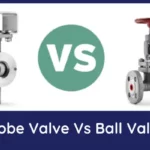Think for a moment about a microscopic impurity, for example, a minuscule sliver of metal. Now, consider how difficult it would be to locate that tiny sliver of metal and remove it from oil. In many industries, contaminants such as metal find their way into the oil that lubricates your machinery.
It’s not an easy task, and that’s where oil centrifuges come into play. Contaminants in oil lead to damaged machinery and equipment. Because oil is supposed to lubricate equipment for smooth operation, any type of contaminant contributes to unnecessary wear and tear. So, let’s learn all about oil centrifuges and how they work.
What is An Oil Centrifuge?

Unless you’ve worked in an industrial environment, you may never have encountered an oil centrifuge. Essentially, a centrifuge is nothing more than a drum that spins very fast. The size of these devices can vary greatly – you’ll find smaller ones in labs and significantly larger ones in industrial facilities.
We’ll touch on the exact mechanics of the system shortly, but, as the centrifuge spins, heavier contaminants are pushed to the outer walls by centrifugal force. Then you’re left with clean, pure oil and can discard the contaminants.
How Does An Oil Centrifuge Work?
While centrifuges may seem like a mystery to many, the process is actually very straightforward. So, how does an oil centrifuge work? As we discussed, the entire system works on the principle of centrifugal force. If you’ve ever been on a ride called The Gravitron at a fair or carnival, you have basically been inside a centrifuge.
This ride sees people standing against the walls of a giant circular drum. As it spins, people are pushed hard against the wall. A centrifuge is slightly different because the entire mix of oil and contaminants starts in the middle of the drum, but the scientific principle is much the same. Here are the key steps of the process:
- The mixture of oil and impurities feeds into the centrifuge.
- The centrifuge spins, creating a powerful force that pushes the heavier impurities to the outside.
- The clean oil can be collected once separated, leaving the impurities behind.
So, while the process is pretty basic, it’s a very important one. We should also note that you need to keep your centrifuge in good working order. If maintenance is a concern, speak to your provider about self-cleaning centrifuges.
Understanding the Types of Impurities
When we talk about impurities, we’re not just talking about the big, visible items. As we discussed, many of the contaminants in an industrial setting are microscopic. They may be small, but they can cause untold damage to equipment when mixed with your lubricating oil. Whether it’s dust, dirt or tiny bits of metal, you want these items as far away from your oil as possible.
While some contaminants cause more immediate damage than others, the reality is that no pollutants are good. An oil centrifuge’s rapid spinning speed ensures all particles get removed, no matter how microscopic.
The Benefits of Removing Contaminants from Oil
We’ve mentioned the fact that pollutants in your oil can damage machinery. This is a huge reason to keep your oil clean. But there are other benefits, too. Firstly, the more oil you can recycle and reuse, the less you need to buy. This keeps operating costs low. Secondly, waste disposal is a costly part of any business. Removing contaminants and disposing of oil safely helps the environment.
Less downtime from damaged machinery, better quality lubrication and the resulting cost savings are all valuable reasons to consider oil centrifuges for your business.





